#Marilyn Eastman
Photo
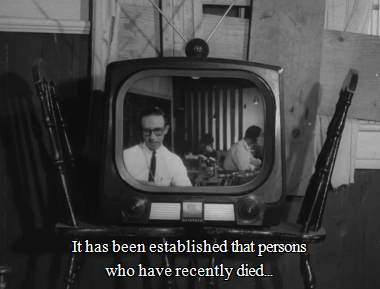

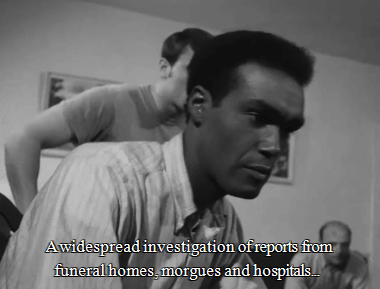

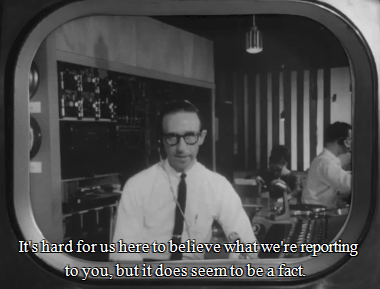
Night of the Living Dead (1968)
#night of the living dead gif#george a. romero#60s movies#60s horror#duane jones#judith o'dea#karl hardman#marilyn eastman#charles craig#zombies#sixties#1968#gif#chronoscaph gif
2K notes
·
View notes
Text










Behind the scenes of Night Of The Living Dead
#horror#horror movies#horror movie#movie#movies#horror behind the scenes#behind the scenes#the night of the Living Dead#night of the living dead 1968#night of the living dead#george a romero#george romero’s dawn of the dead#george romero#George Romero’s night of the Living Dead#60s horror movies#60s movies#60s movie#60s horror#60s#60s vintage#60s aesthetic#60s horror movie#duane jones#Judith o’dea#Karl hardman#Marilyn Eastman#behind the scene photo#Keith Wayne#Judith Ridley#Kyra schon
81 notes
·
View notes
Photo
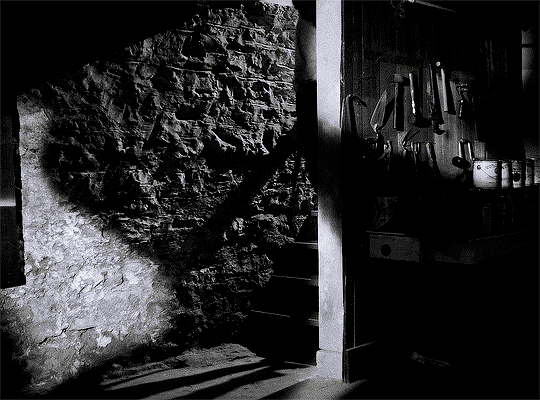





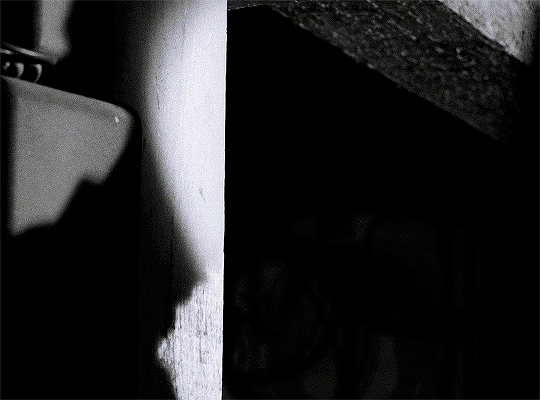
Night of the Living Dead (1968) dir. George A. Romero
#night of the living dead#night of the living dead 1968#filmedit#horroredit#my gifs#dead series#mine: notld#horror#george romero#horror movies#zombies#movies#b&w#1960s#duane jones#karl hardman#marilyn eastman#ben: notld#harry cooper#helen cooper#tw gore#tw blood
706 notes
·
View notes
Text

#night of the living dead#horror#movies#1968#1960s#judith o'dea#duane jones#marilyn eastman#karl hardman#judith riley#keith wayne#george romero#zombies#movie posters
8 notes
·
View notes
Text
Remembering Night of the Living Dead star Marilyn Eastman on the anniversary of her death.

R.I.P. (1933 - 2021)
#rest in peace#marilyn eastman#night of the living dead#actress#scream queens#horror art#fan art#movies#movie art#art#drawing#movie history#r.i.p.
5 notes
·
View notes
Photo

Night of the Living Dead - George A. Romero 1968
#Night of the Living Dead#George A. Romero#Judith O'Dea#Duane Jones#Marilyn Eastman#Russell Streiner
35 notes
·
View notes
Photo










Night of the Living Dead (1968)
#Night of the Living Dead#George A. Romero#Duane Jones#Judith O'Dea#Marilyn Eastman#horror#zombie#spooktober#60s#movie caps
8 notes
·
View notes
Text
NIGHT OF THE LIVING DEAD (1968)

A dramatic, film noir type film, but it works with the musical flairs and equally dramatic camera angles. The whole thing is quite fun to watch (other than it being a pretty realistic depiction of the dangers of a night's entanglement with zombies). The characters and their struggles appear to be very genuine, just as the way the threat feels. Struggle through this harrowing night with them?
⭐⭐⭐⭐

Our eerie film starts out in the car with a blond brother and sister who stumble (quite literally) upon our first walker who makes quick work of Bro then sets his sights on Sis (now, why Zombies don’t ever enjoy the fresh brains they just secured is beyond me, but I digress). Immediately this Zimbabwe is smarter than the average dead-man walking because he picks up a rock to break the car window and get to Barbra (They are using tools! They are learning!) Seriously though, there are so many undead intelligently using rocks and sticks as tools and it makes no sense to me since (you'd think) they are brainDEAD but again, I digress.

The reanimated are also afraid of fire, we find this out when we meet Brave Ben, who is amazing and we love him. I have NO idea why they are afraid of fire though, because Zoomies are all unfeeling, it’s kind of what makes them so strong, the fact that pain doesn’t stop ‘em, so why is fire so scary to them? It was scary to FRANKENSTEIN'S MONSTER because he wasn’t really a monster and had feelings, but these guys are just a load of meat and bone (and lots of space radiation). We find out from the radio that the re-alive folk like to munch on the newly deceased (not yet re-alive) folk which is pretty yucky!

We find five (5) people in the cellar of the house Ben and Barbra are hiding in but they don’t last long! The first couple (2) get barbecued in the truck and we watch the Z-boys have a feast on what should be their charbroiled remains but honestly they still look very fresh (There is one Zamboni in particular (played by Roger McGovern) I called “Little Caesar” and he looked so happy munching on flesh!). Next the family of three (3) lets Daddy Dearest be a dickhead, get himself shot and killed then munched and crunched on by his Zoombini daughter who then kills the mom (in one of the weirdest death scenes but let's just glide on past that).

If Barbra had done literally anything other than lie on the couch the whole movie, she might have stood a chance, but even if she had survived the fact of the matter was, those policemen (or whomever at the end of the film) were never going out to look for survivors. They were always going to shoot first and ask questions never. That is the tragic point of this film. Brave Ben. The entire night Ben makes the best choices, he helps others, he helps himself, but he also survives until the last possible moment. He survives the NIGHT OF THE LIVING DEAD only to be shot DEAD by the LIVING. How do you like them apples? (Or for “Little Caesar”, how do you like that cooked flesh?”)

#N#Night of the living dead#4 stars#Night of the living dead review#horror#Night of the living dead 1968#zombie review#night of the living dead 1968 review#horror scifi#horror movie review#horror movie#horror review#movie review#spooky movie review#horror films#scifi review#horror scifi review#Duane jones#judith o'dea#karl hardman#judith ridley#kyra schon#marilyn eastman#George kosana#Roger McGovern#Zombies#zombie#zombie movie review#zombie reviews
1 note
·
View note
Text
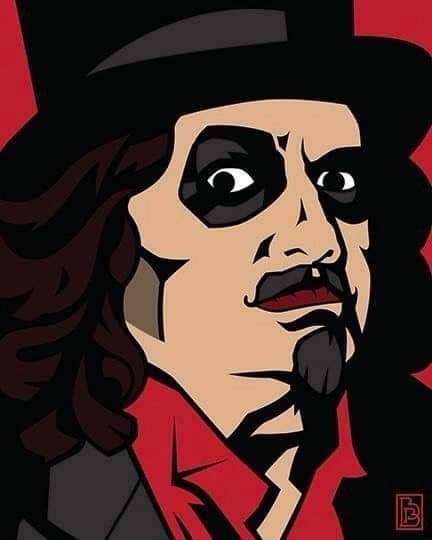
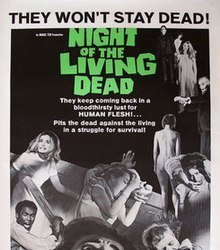
Now showing on Stevegoolie Saturday Night...Night Of The Living Dead (1968) on classic DVD 📀! #movie #movies #horror #nightofthelivingdead #georgeromero #ripgeorgeromero #Zombies #duanejones #ripduanejones #judithodea #karlhardman #ripkarlhardman #judithridley #BillCardille #ripbillcardille #kyraschon #billhinzman #marilyneastman #ripbillhinzman #RichardFrance #russellstreiner #60s #DVD #stevegoolie #Svengoolie #METV #theyrecomingtogetyoubarbara
#movie#movies#horror#night of the living dead#george romero#rip george romero#zombies#duane jones#rip duane jones#judith o'dea#judith ridley#bill cardille#rip bill cardille#Richard France#Russell Streiner#karl hardman#rip karl hardman#Kyra Schon#bill hinzman#rip bill hinzman#Marilyn Eastman#60s#dvd#Stevegoolie#svengoolie#me tv#Spotify
0 notes
Text
22 agosto … ricordiamo …
22 agosto … ricordiamo …
#semprevivineiricordi #nomidaricordare #personaggiimportanti #perfettamentechic
2021: Marilyn Eastman, attrice statunitense. Era sposata con Karl Hardman. La sua figliastra Kyra Schon apparve nel film La notte dei morti viventi. (n. 1933)
2019: Franco Garofalo, noto anche con gli pseudonimi di Frank Garfield o Frank Garfeeld, è stato un attore italiano. (n. 1946)
2012: Jeffrey Stone, è stato un attore e artista di doppiaggio americano. Stone è stato il modello e…

View On WordPress
#22 agosto#Bruce Cowling#Charles Sebastian Thomas Cabot#Colleen Dewhurst#Colleen Rose Dewhurst#Diana Dalziel#Diana Vreeland#Franco Garofalo#Frank Garfeeld#Frank Garfield#Imperio Argentina#Jack Briggs#Jeffrey Stone#John Calvin Briggs#Louise Huff#Louise Huff Stillman#Magdalena Nilé del Río#Maria Antonelli#Marilyn Eastman#Ricordando ..#Ricordiamo#Sebastian Cabot
0 notes
Text
Night of the Living Dead (1968)
My ★★★★ review of Night of the Living Dead (1968)
#FilmReview #MovieReview #Cinema
Synopsis – A ragtag group of Pennsylvanians barricade themselves in an old farmhouse to remain safe from a horde of flesh-eating ghouls that are ravaging the East Coast of the United States – Night of the Living Dead.
Director – George A. Romero
Starring – Duane Jones, Judith O’Dea, Karl Hardman, Marilyn Eastman
Genre – Horror | Thriller
Released – 1968
⭐⭐⭐⭐
Rating: 4 out of 5.
For fans of…
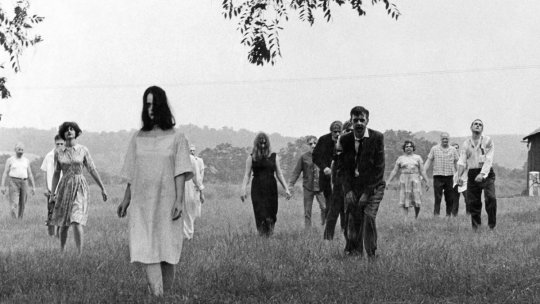
View On WordPress
#1960s Cinema#★★★★#black and white cinema#Black Cinema#cinema#Creature Feature#Duane Jones#film review#Film Reviews#George A. Romero#Horror#Judith O&039;Dea#Karl Hardman#Marilyn Eastman#movie review#night of the living dead#Thriller
1 note
·
View note
Text
Teenage Mutant Ninja Turtles to Achieve Hollywood Immortality
The neighborhood of Hollywood, California has two levels of immortality. The first is a star on the Hollywood Walk of Fame, which itself is an incredible, amazing achievement. Then there’s an even cooler, more personal, way to be part of Hollywood history, and that’s to have one’s hands imprinted outside the TCL…
Read more…

View On WordPress
#Al Jolson#Brian Robbins#Clint Eastwood#Comics superheroes#Culture#Dwayne Johnson#Entertainment#Fictional mutants#Fictional turtles#Frank Sinatra#Gizmodo#Harry Potter#Human Interest#Jimmy Stewart#Joan Crawford#Kevin Costner#Kevin Eastman#Leonardo#Marilyn Monroe#Meryl Streep#Paramount#Raphael#Teenage Mutant Ninja Turtles#Teenage Mutant Ninja Turtles & Other Strangeness#Teenage Mutant Ninja Turtles IV#TMNT#Turtles Go Hollywood#Walk of Fame
1 note
·
View note
Text










In lieu of a Monday Philm post tonight, I wanted to tell y'all about the long weekend I had in Western New York. I took a very special trip up to Phil's hometown of Rochester, NY, for a special 35mm screening of Owning Mahowny—which ended up being one of the best nights of my life. TL;DR I met his family and got to tell them how much he is loved ❤️
As some of you might know, the Eastman Museum in Rochester is now the permanent home of PSH's statue, and to celebrate, the museum's Dryden Theatre is showing his films all year long. I've been dying to see Phil's hometown and especially the statue since it was unveiled last year and finally made it (many hours and several hundred miles in the rain) up to WNY for a couple days. Y'all I can't even tell you how excited I was just to be in Rochester, like geeking over everything. We visited Fairport, where Phil grew up, and went to a restaurant with a burger named after him (yum), and got his fave kind of donuts at the Wegmans where he worked as a cashier in high school (I told you, geeking HARD). It's such a nice, friendly city and so many little things about Phil clicked just being there.
We went to the Eastman Museum first thing Saturday morning to see his statue and it's so perfect. Yes I cried a little bit as soon as I walked up to it! I don't need to tell y'all how much Phil means to me and finally seeing this public tribute to him, which looks so good and is so approachable and huggable and real and lovely, was amazing. Passed it four times going in and out of the museum and made my mom take my photo with him every time :-)
That night was the 35mm screening of Owning Mahowny. Already one of my favorite PSH films, I recently finished the book it's based on—No Limit: The Incredible Obsession of Brian Molony by Gary Ross—which is just as engrossing and made me even more excited to rewatch the film on the big screen. We were the first people to the theater bc I was so anxious to be there lmao.
I recognized Phil's mother, Marilyn, and his older sister, Jill, who arrived about 20 minutes before the film and sat a few seats away. My anxiety was through the ROOF—I am very shy in person, but I knew I'd regret it if I didn't say anything and since this was a PSH-related event I figured they probably wouldn't mind if I brought him up. Thanks to Phil I have a hundred times more confidence than I did just a few years ago, so I worked up my courage and went over to introduce myself, tell them my name and how far I came just to see the statue and the film, how much I admire Phil and his work.
Y'all I'm tearing up again just typing this because they were the nicest people I have ever met in my life, seriously. His mom and his sister were immediately so kind that my nerves melted away, it was like talking to friends. They were touched that I'd come so far, they thanked ME for coming over to say hello. I shook their hands and we had a whole conversation for several minutes—I got to tell them that Phil changed my life, how I've seen all of his films, the ways he's inspired me to make my own art. I can't even believe I am writing this because it was so surreal and incredible. They asked me so much about my trip and myself, which is cute because I've heard so many stories about how Phil always asked people about themselves, their lives, their families, their work. His mom asked if I'd seen the statue (of course!!!) and told me to make sure I took a selfie with him :''''') so obviously I took another one when we left <3

Jill and I talked about Owning Mahowny and gambling while my mom talked to Phil's mom (like how is it even real that I'm saying that?), then Marilyn told a funny, sweet story about when Phil was filming Mahowny in Toronto in 2002. One day he called and asked to come home for a while, then drove down and spent the day with her watching hours of dailies of the same exact shot, scrutinizing each take and laboriously trying to decide on the best one—and his mom was like, "Phil, what are we searching for, these all look the same to me" LMAO 😭
The film itself was obviously amazing, no need for a full review here. Equally wonderful to share it with a big audience laughing, cringing, gasping, crying, smiling. The 35mm print looked beautiful. As we were leaving, Phil's sister made a point to catch my eye and thank me again for stopping to say hello! We said goodbye to her and Marilyn and they wished us a great rest of our trip to Niagara Falls the next day—it was so sweet they remembered I'd even mentioned it.
I hardly slept that night I was so excited lol. It's been two days and it still feels surreal. I'm repeating myself but I can't get over how warm and kind they both were, how we were all kind of moved almost to the point of tears talking about their beautiful son and brother, my hero, the artist and man who saved my life and brought us all together. I'm so so so grateful for the opportunity to tell them what Phil means to me. Since then I've had a million thoughts like "oh I wish I'd said this or that," but really it would be impossible to sum up in words, even if we had all the time in the world, everything I want to say. I said it before but it's easy to understand how Phil turned out to be such an amazing person, coming from a family like that.
One of the simplest yet most meaningful couple of days in my whole life. It was better than I could've hoped for. Mostly joy—and while there was some grieving and missing him, too, I know it all came from love. I feel closer to Phil than ever. Thank you for making me feel so welcome in your home, Phil. Words are never enough but I love you so much, we're all so proud of you.
#philip seymour hoffman#psh#*#words#I don't even know how to tag this!!!! the craziest best thing to ever happen to me!#btw the hoffman burger kicked ass. it was so good I wasn't hungry for the rest of the weekend literally
30 notes
·
View notes
Text
Horror #1a: Night of the Living Dead
It is not often that a film, especially a low-budget flick with guerilla-style filmmaking tactics, kicks off an entire new sub-genre - but Night of the Living Dead (1968), directed by George Romero, is now considered a touchstone in the horror genre as the first zombie movie. The slow-moving, yet terrifying, ghouls threaten a group of people seeking shelter in a remote farmhouse and the story focuses just as much on the interpersonal conflicts as on the villains growing in numbers and strength on the outside. Incredibly progressive in its diverse casting, the film not only launched Romero’s career, spawned a long-lasting franchise, but also inspired untold numbers of zombie cinematic tales. The first film in our Horror Marathon is a bit of homework before the official kick-off - dipping a toe into the genre with the first zombie movie!
Siblings Johnny and Barbara (Judith O’Dea) drive to a cemetery to visit their deceased father’s grave, only to be attacked by a slow-moving, yet dangerous, undead creature. Johnny perishes, but Barbara escapes by running away and seeks shelter in a seemingly abandoned farmhouse. She is soon joined by Ben (Duane Jones), who secures the house as more of the ghouls make their way toward their sanctuary. They soon discover more people in the farmhouse’s cellar - a young couple and a family of three, a father Harry (Karl Hardman), mother (Marilyn Eastman), and daughter - who has been unfortunately bitten by one of the creatures. The newly formed group desperately tries to gather more information via radio and television reports. A plan to obtain gas for the farmhouse car goes awry, killing the young couple who volunteered for the risky mission. The ghouls use this opportunity to attack the farmhouse and fear of the undead leads to turmoil amongst the surviving humans. A conflict between Ben and Harry leads to the father’s death. Barbara is taken by her brother's revived ghoul body, and the daughter dies from her wounds. She reanimates, eats her father’s flesh, and kills her mother - all before attacking Ben who is seeking his shelter in the cellar as a final stand. He fends her off by shooting the girl down and survives the night in the cellar. As he miraculously awakens in the morning, Ben emerges from the farmhouse and meets an armed posse sent to destroy the ghouls; mistaking him for a deadly creature, they shoot him down and burn his body.
Establishing the tone via the setting is key to any horror movie - and Night of the Living Dead checks all the creepy boxes. The first scene is literally set at a cemetery, giving the ghouls a natural place to stage their attack. The abandoned farmhouse, which is the central location of the film, is an ideal setting for the horror genre. It not only provides ample devices to stage their last stand, as they tear the place apart to set up barricades to block their foes, but also becomes a central conflict amongst the characters; they spend a majority of the film arguing about whether to lock themselves up in the cellar or take their chances in the main house. The remote location leaves the characters on their own to either find a way to work together or face the (slowly) incoming danger separately. Their division leaves the majority of the party deceased, while only Ben survives in the cellar, a plan he was initially vehemently opposed to as a complete dead end. Desperation drives him to the last ditch solution and, ironically, it is emerging from the farmhouse sanctuary that eventually kills him as the final member of the doomed party.
The characterizations of that doomed party are both progressive and frustratingly pedantic at the same time. While the script was not written with a black lead in mind, Romero cast the best actor to audition for the hero role, a controversial move in the late 1960s. Jones is by far the best actor of the bunch (more on that later), and his casting naturally infuses the script with far more subtext for the intra-human conflicts. His decision to stay on the main floor and take leadership of the group there, standing up strongly to Harry, who thinks the cellar is the better move, must be viewed through the lens of the racial politics of the 1960s - a young black man asserting his power over a feckless white male. In a similar vein, Ben takes care of the simpering Barbara, but their relationship isn’t entirely smooth either. At one point, they get into a physical altercation and Ben slaps her, leading her to faint, and he moves her body to the couch to recover. Although Ben ultimately is protecting her, the images of a black man hitting a hysterical white woman must have been shocking to audiences of the time. Finally, the brutal act of law enforcement shooting down a defenseless black man, applying force that leads to his death, is an image that is evocative both in the historical context of the 1960s Civil Rights movement as well as resounding today.
While the racial portrayal is complicated, the women in Night of the Living Dead are disappointingly inept. Perhaps additionally hampered by their poor acting abilities, the script draws the various women as overwhelmed and helpless in the world’s darkening circumstances. Barbara in particular, although dealing with the trauma of losing her brother and being attacked by the ghouls, just cannot pull it together to deal with the crisis. She consistently vacillates between catatonic states and hysterics and can only rely on Ben to protect her. The woman in the young couple shows some grit to go on the gasoline mission, but the actor is so terrible that she is hard to watch in the film. In the same vein, the mother of the family basically lets herself get taken by the zombies - she doesn’t even put up much of a fight for her life when they are breaking into the house, nor when her undead daughter comes to eat her flesh. For all of us women out there, put up a bit more of a fight, please!
The fight these characters are up against is the monster of this horror film - the zombie (although they are only ever referred to in the movie as ghouls). The villain appears almost innocently at the start of the film, slowly shuffling towards our unsuspecting siblings, an undead in a business suit whose speed slightly increases as he chases Barabara through the countryside. He appears as mostly human, with very little movie makeup to indicate his ghoul nature, but the opening sequence already sets up the danger they present, especially as Johnny is taken down right away. As the farmhouse becomes the sanctuary to our band of humans, the undead are drawn to the sniff of life and their numbers grow in volume; an assemblage of various undead humans shuffle their way towards their potential victims. Romero composes an incredible shot of one zombie stumbling back from the camera and revealing numerous more zombies stalking forward, crystalizing the growing threat.
As the film’s action centers more on clashes with the ghouls, the camera focuses closely on the grisly flesh, but, understandable for a low budget film, the movie makeup and special effects have inconsistent visual results. During a sequence of the monsters attempting to storm the house, zombie hands are reaching in through the barricade and the young man in the couple is wielding a knife for defense; he hacks away at a hand that is obviously fake, easily removing fingers in a smooth swipe that features no blood nor bones nor reality - even he seems surprised that it was so easy to cut. In just the next few shots, however, Ben shoots a zombie and the gunshot wound with smattering blood is incredibly realistic and creepy. As fire is a natural enemy of zombies, the team of humans use it as a defensive weapon, and the special effects crew feature a shot of a stuntman on fire. Romero also focuses the camera several times on zombies attacking and consuming the flesh of humans, crafting creepy close-up images of humans as a meal for monsters, culminating in the sequence of the daughter hacking her mother to death and feasting on her father. The images here are the most explicit of the film, using shadow work to feature the weapon and blood spurting and dripping as her death screams wail. As a low-budget film, Romero must have had to choose where to spend his budget for ramping up the terrors of the monster and for the most part, the dread that is generated from their efforts is well-earned.
Night of the Living Dead’s place in horror history is notable for creating a new zombie sub-genre, but it also exists within the arc of horror’s cinematic evolution, as detailed in the Horror Marathon’s overview. [link to my first blog post] In a post-Psycho world, Romero’s zombie apocalypse fits in narratively with the evolution of the horror genre’s storytelling. Rather than an external monster that terrorizes humans, the ghouls are humanity themselves, re-animated and eager to cannibalize their fellow beings. Even within the farmhouse sanctuary, conflict emerges and sets the groups of people against each other, showing their monsters within despite the evil lurking outside. Social institutions that are meant to protect and serve, such as the policemen who are hunting the ghouls across the countryside, become villainous - killing Ben by mistaking him for a monster, rather than the lone survivor of a violent siege. Although unintentional, society’s institutions deliver the final killing blow. These themes continue to be explored in the explosion of zombie movies that spawned from this initial film, including some cultural touchstones that will be viewed during this Horror Marathon!
Night of the Living Dead has some rough edges as an output of low-budget independent filmmaking, but its ambitious ideas and unique monsters make it a great first introduction to the horror genre. The uneven acting was sometimes a distraction, but the progressive casting of an African-American hero was brave for its times (and helps that Duane Jones was the best performer in the cast), infusing the film with societal commentary that was more reflective of the anxieties within the United States in the late 1960s. While the ghouls are a bit slow and feel less threatening than modern zombie films, the focus on the daughter in the climax emphasized the real danger these monsters posed to humanity. Unfortunately, the mother - and most of the other women in this film - don’t fight back with any actual effort, which was a disappointment. The film’s ultimate conclusion, that even after defying the odds and surviving a night in the farmhouse surrounded by the walking dead, the main hero is cut down by the very humans and social institutions attempting to solve the crisis, shows a pessimistic worldview that aligns with the social and racial anxiety of the 1960s. The next stop on our marathon is the sequel to this film, Dawn of the Dead (1978), which comes a full ten years after the initial movie; slightly excited, but mostly scared to see how Romero ratchets up the stakes, intensifies the danger of the monsters, and continues the horror.
2 notes
·
View notes
Text

#night of the living dead#horror#movies#1968#1960s#judith o'dea#duane jones#marilyn eastman#karl hardman#judith riley#keith wayne#george romero#zombies#movie posters
7 notes
·
View notes
Text


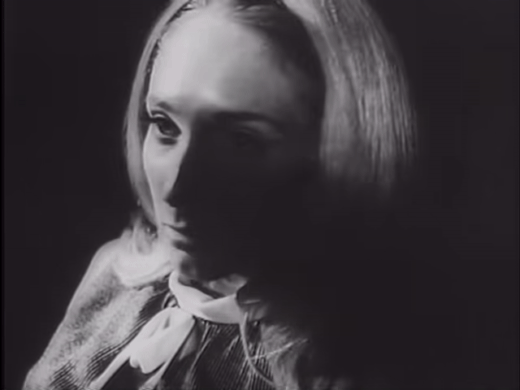
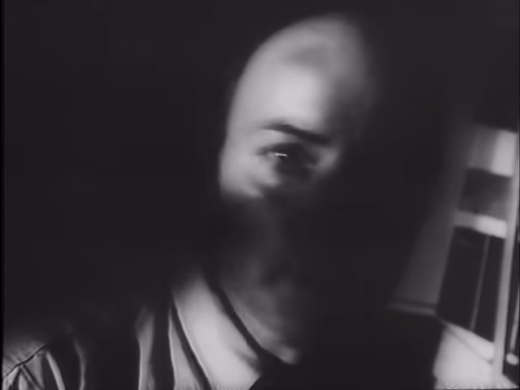
Night of the Living Dead (1968)
#night of the living dead 1968#night of the living dead#george a. romero#marilyn eastman#karl hardman#judith o'dea#duane jones#zombie apocalypse#zombies#zombie movies#horror movies#sci fi horror#horror#old horror movies#classic horror#cult movie gifs#horror gifs#movie gifs#gif warning#tcm underground gifs
25 notes
·
View notes